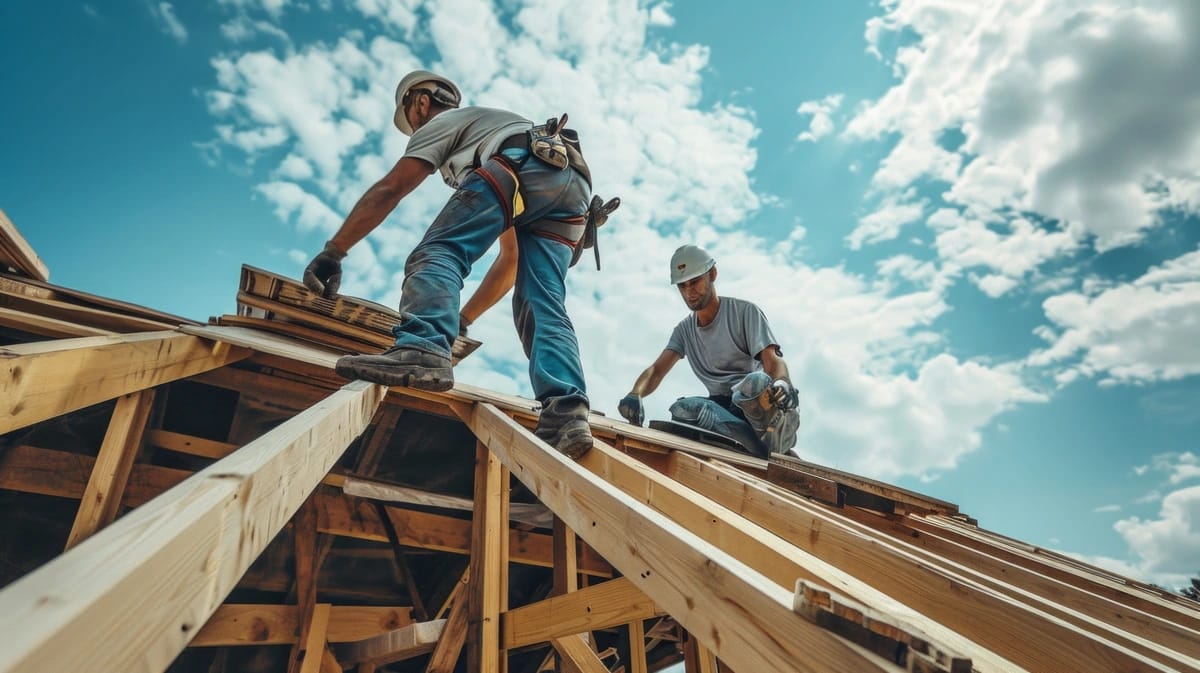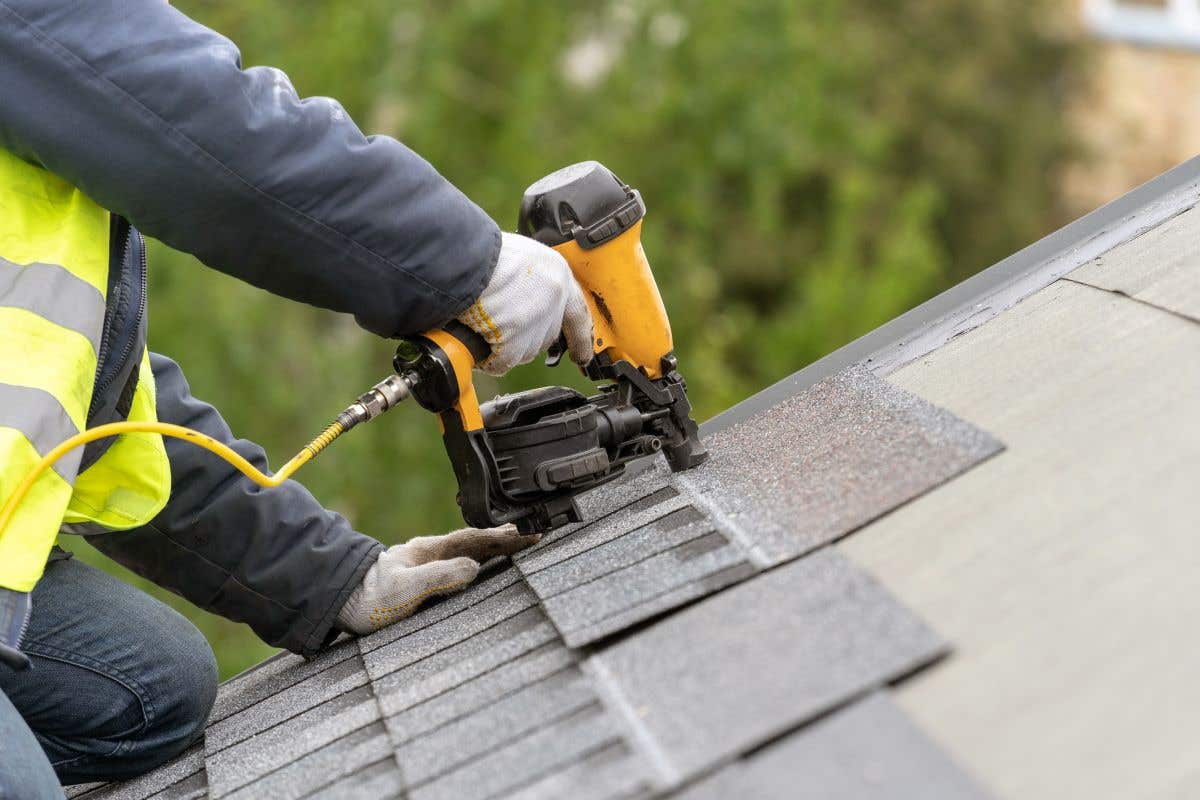Comprehending the Various Sorts Of Roofing Systems: A Comprehensive Overview for Homeowners
With an array of alternatives-- ranging from the traditional gable to the modern flat-- each kind provides distinct benefits and difficulties that should straighten with the house owner's ecological considerations and specific requirements. As we discover the intricacies of different roofing types, it becomes obvious that one size does not fit all; the appropriate option may shock you.
Gable Roof Coverings
Gable roofings, characterized by their triangular form, are among one of the most popular roof designs because of their simpleness and effectiveness in dropping water and snow. This design features 2 sloping sides that meet at a ridge, enabling efficient drain and minimizing the danger of water buildup. The steep pitch frequently connected with gable roofing systems boosts their ability to deal with hefty rainfall, making them suitable for different environments.
In enhancement to their practical benefits, gable roofings offer aesthetic versatility. They can be adapted to numerous building designs, from conventional to contemporary homes. The style can additionally accommodate additional features such as dormer windows, which improve all-natural light and air flow in the attic room room.
Moreover, saddleback roofs supply enough room for insulation, adding to energy efficiency. House owners can pick from a selection of roof covering products, consisting of asphalt tiles, steel, and floor tiles, further enhancing customization alternatives.
Regardless of their advantages, gable roofing systems might call for extra support in locations susceptible to high winds or hefty snowfall. In general, the saddleback roof stays a preferred option because of its blend of functionality, toughness, and aesthetic appeal.
Apartment Roofs
Level roofings are commonly acknowledged for their minimalist design and practical applications, specifically in business and commercial setups (oahu roofing). These roofings feature a horizontal or virtually straight surface, which allows for very easy building and versatile room use. While they may do not have the visual appeal of pitched roofs, level roofings offer various benefits, particularly in urban settings where maximizing room is important
One of the key benefits of level roofing systems is their accessibility. House owners can utilize the roof covering area for numerous functions, such as roof gardens, balconies, or solar panel setups. Additionally, level roofs are normally much more cost-efficient to maintain and install compared to their sloped equivalents, as they call for fewer materials and labor.
Nevertheless, level roof coverings do present certain difficulties. Proper water drainage is important to stop water merging, which can bring about leaks and structural damages. Thus, picking top quality waterproofing materials and regular assessments are crucial for making sure long life. Typical materials made use of for level roofings include built-up roofing (BUR), customized asphalt, and single-ply membranes, each offering distinct advantages. Generally, level roofs work as a adaptable and practical selection for many house owners and organizations alike.
Hip Roof Coverings
Hip roofs are identified by their sloped sides that converge at the top, forming a ridge. This design stands out from gable roofing systems, as all four sides of a hip roof incline downwards towards the wall surfaces, offering a more stable framework. The angle of the inclines can vary, permitting versatility in building aesthetics and functionality.
Among the main advantages of hip roof coverings is their capability to endure heavy winds and damaging climate condition. The sloped surface areas allow much better water drain, minimizing the danger of leaks and water damages. Additionally, hip roofs use boosted attic room, which can be used for storage or also exchanged habitable locations.
Nevertheless, constructing a hip roof covering can be much more pricey and complicated than simpler roof covering kinds, such as gable roofings. The additional material and labor involved in producing the inclines and guaranteeing correct structural honesty can result in greater expenses. In spite of these downsides, numerous home owners favor hip roofs for their toughness, aesthetic allure, and potential for power performance.
Mansard Roofings
Mansard roofing systems, typically recognized by their special four-sided layout, feature two inclines on each side, with the reduced slope being steeper than the upper. This architectural design, stemming from France in the 17th century, is not just aesthetically attractive yet useful, as it makes best use of the usable space in the upper floorings of a structure. The high reduced incline enables more headroom, making it a suitable selection for attic rooms or loft spaces, which can be converted right into living rooms.
Mansard roof coverings are characterized by their flexibility, fitting different building styles, from standard to modern-day. They can be created with various products, consisting of asphalt roof shingles, slate, or steel, supplying house owners with a variety of alternatives to match their budget plans and preferences. Furthermore, the design enables the integration of dormer home windows, boosting all-natural light and air flow in the upper levels.
However, it is vital to consider the potential downsides. Mansard roofing systems may require even more upkeep because of the complexity of their design, and their high inclines can be challenging for snow and rainfall drainage. Overall, mansard roofs combine beauty with functionality, making them a prominent option among home owners looking for unique architectural attributes.
Dropped Roofing Systems
As homeowners significantly seek simplicity and capability in their architectural layouts, dropped roofs have actually emerged as a popular option. Characterized by a solitary sloping airplane, a shed roof offers a minimalist visual that matches numerous home styles, from contemporary to site link rustic.
One of the main advantages of a shed roofing system is its uncomplicated building, which usually equates to decrease labor and product costs. This layout enables effective water drain, reducing the danger of leaks and water damage. Furthermore, the vertical slope gives sufficient room for skylights, improving all-natural light within the interior.
Shed roof coverings also offer adaptability in terms of usage. They can be successfully incorporated into additions, garages, or outside frameworks like pavilions and sheds. Moreover, this roof covering style can fit different roof products, consisting of metal, asphalt roof shingles, or perhaps eco-friendly roofings, straightening with green initiatives.
Nevertheless, it is vital to think about regional environment problems, as hefty snow loads might require changes to the roofing's angle or structure. In general, dropped roofing systems provide a sensible and cosmetically pleasing option for homeowners seeking to optimize functionality without compromising design.
Verdict


Gable roofing systems, characterized by their triangular form, are among the most preferred roofing styles due to their simpleness and effectiveness in shedding water and snow. oahu roofing. The steep pitch generally associated with gable roofings enhances their ability to handle hefty you can find out more precipitation, making them appropriate for different environments
While they may lack the visual charm of pitched roof coverings, level roofing systems provide countless benefits, specifically in metropolitan settings where taking full advantage of space is essential.
